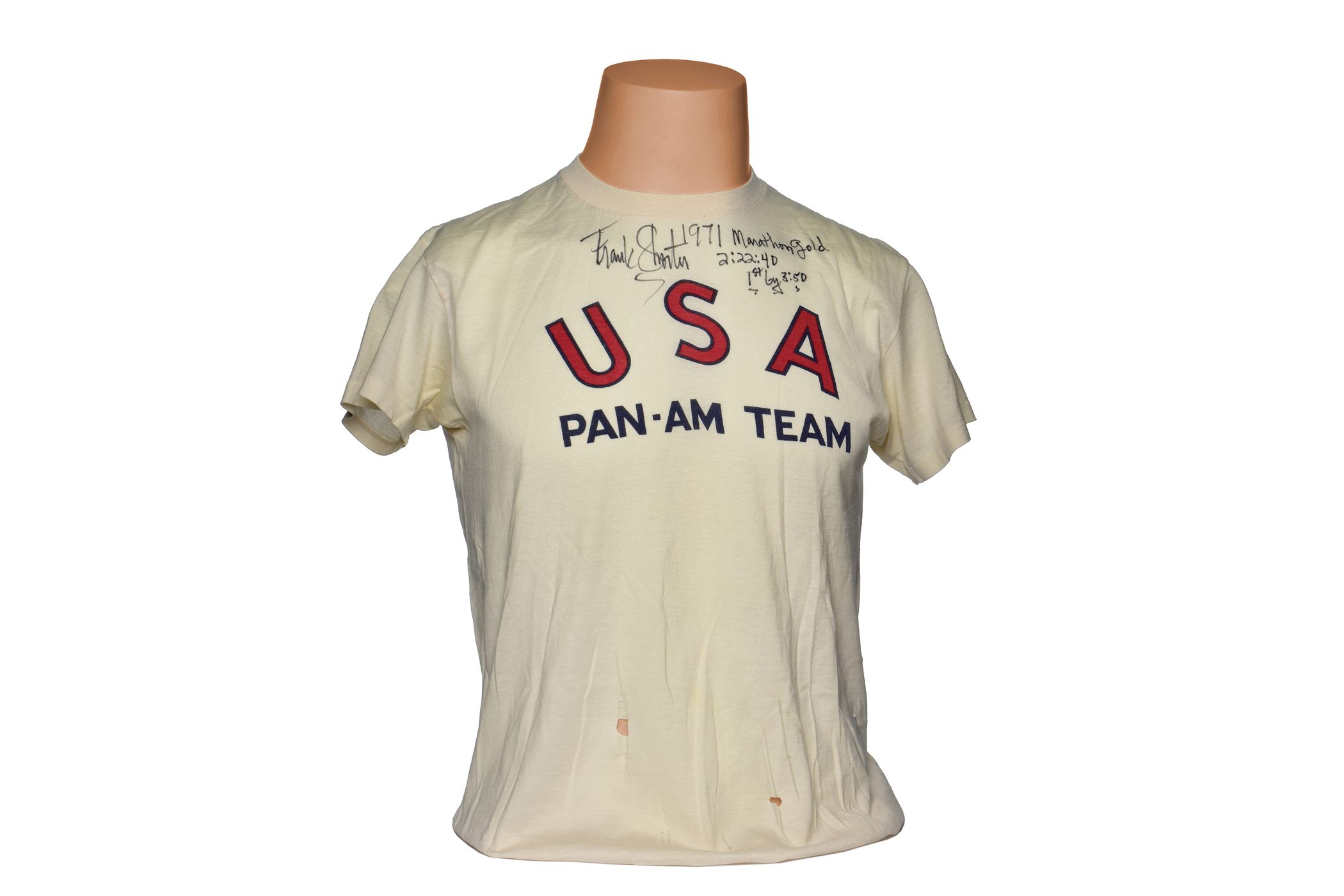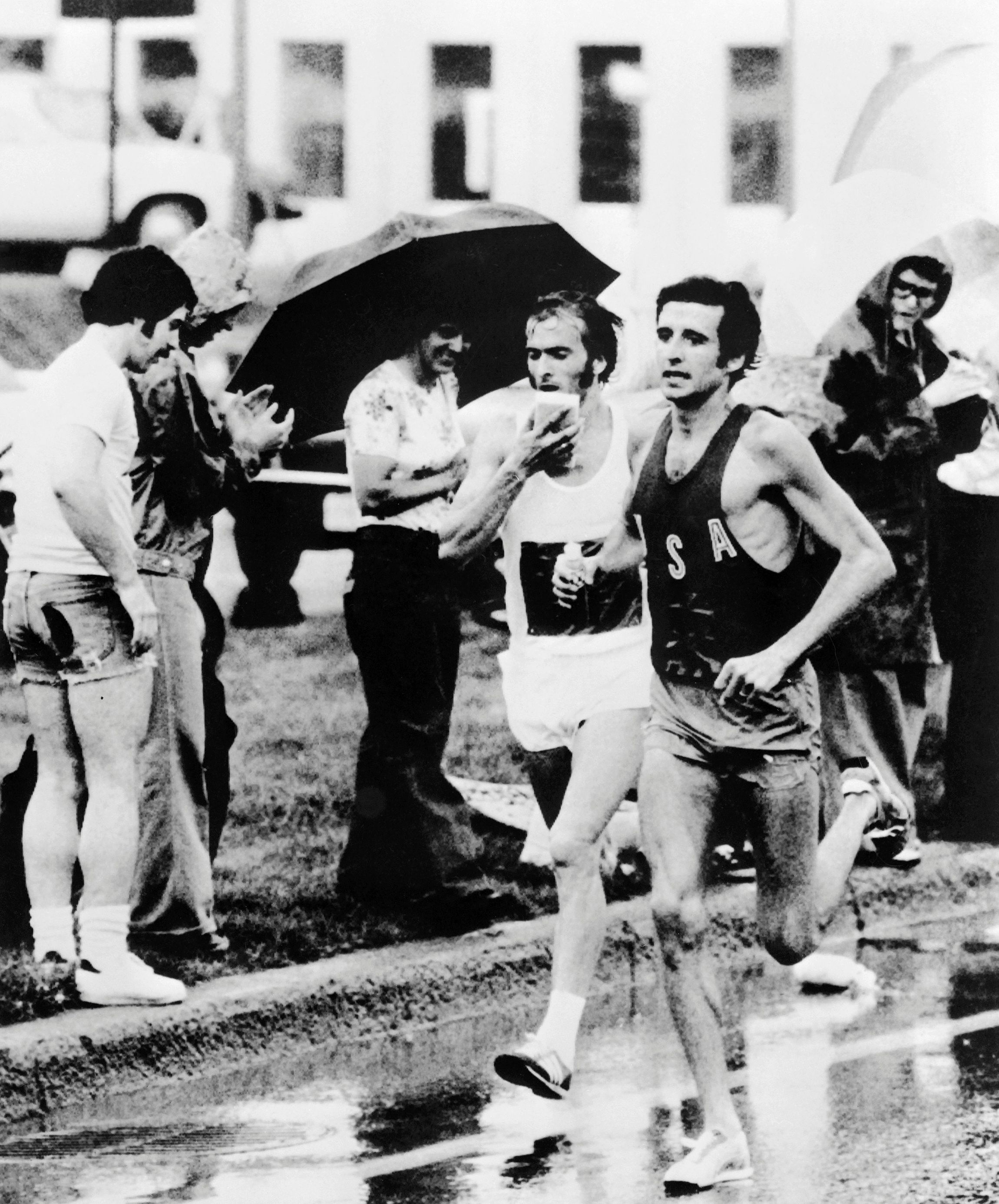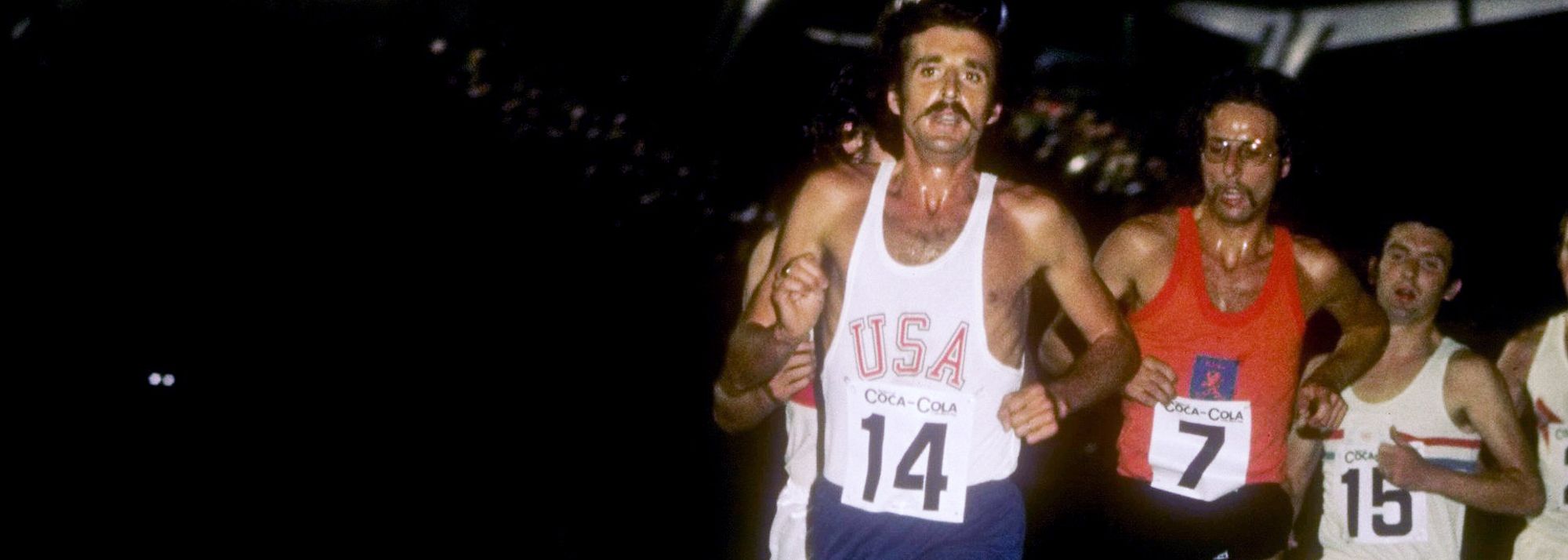US distance runner Frank Shorter (© Getty Images)
Frank Shorter was a picture of serenity as he entered the Olympiastadion in Munich on the afternoon of 10 September 1972.
A distinctly distinguished figure, with his gently drooping moustache and his mop of black, wavy hair, he retained his composure and his smooth, measured stride – even when he caught sight of a thickset figure on the track ahead of him.
Shorter knew he had been comfortably clear of the field since the nine-mile mark in the Olympic marathon.
Up in the ABC Television commentary box, it was rather different. “That is an imposter!” screamed Erich Segal. “Throw the bum out!... Come on Frank! You won it! It’s a fake, Frank!”
Segal, the celebrated author of Love Story, which became a blockbuster film featuring Ali McGraw and Ryan O’Neill, was on first-name terms with Shorter. He was one of his tutors at Yale University.
He had been hired as an expert co-commentator for the race because he was known to be a fanatic marathon runner, albeit with a relatively modest personal best of 2:56:30.
At the time, marathon running in the United States was considered a sporting obscurity. Shorter changed all that as he crossed the line in Munich – the city in which, coincidentally, he had been born when his father was stationed there as a US Army doctor in 1947 – the crowd still booing the interloper was being hustled away by security guards.
In the book Frank Shorter: The Man Who Invented Running, Michael Sandrock maintained that Shorter’s triumph “started a generation on a fitness boom that would make running into a worldwide mass-participation sport”. Runner’s World has described Segal’s former student as “the father of the modern running boom”.
That Shorter has been a pivotal figure in the running boom is beyond question.
World Athletics Heritage is proud that the starred and striped trailblazer has kindly donated the USA t-shirt which he wore at the 1971 Pan Am Games to the Museum of World Athletics (MOWA).

Frank Shorter's signed t-shirt from the 1971 Pan American Games
Those Games – held in Cali, Colombia’s third largest city – where Shorter won a 10,000m and marathon double, sowed the seeds of his marathon success in Munich.
He considered himself strictly a track runner until his good friend Kenny Moore encouraged him to enter the 1971 AAU Marathon in Eugene, the designated trial race for that year’s Pan American Games.
Shorter – who was raised in Middletown, New York, the second eldest of 11 children – had never run farther than his weekly 20-mile Sunday morning training stint before.
He had taken part in the US Olympic marathon trial in Alamoso in 1968, mainly because it was close to his home in Boulder, Colorado, but he dropped out with badly blistered feet after completing one circuit of the multi-loop course.
Without any suitable marathon shoes, he borrowed a pair the night before the race from Amby Burfoot, the 1968 Boston Marathon winner and future long-time editor-in-chief of Runner’s World. They were a size and a half too big.
‘Why couldn’t Pheidippedes have died?’
Three years later, Shorter was better equipped for the Pan Am Games trial. Aiming for “anything under 2:20”, he clocked 2:17:44 as runner-up to Moore, who went on to finish fourth in the 1972 Olympic marathon and, like Burfoot, became an insightful chronicler of the sport as a hugely-gifted writer with Sports Illustrated.
Approaching the 20-mile mark that day in Eugene, Shorter turned to Moore and lamented: “Why couldn’t Pheidippedes have died?”
Legend, of course, has it that the Greek messenger ran the 26 miles (or so) from Athens to announce the Greek victory against the Persians at the Battle of Sparta, reportedly proclaiming, “Rejoice, we have conquered!” before keeling over and dying – thereby setting a rough historical precedent for the distance of a marathon run.

Frank Shorter (right) in action in the 1976 Olympic marathon (© AFP / Getty Images)
In the heat, humidity and high altitude of Cali, Shorter won the 10,000m in a Games record of 28:50.83 before stepping off the road at the 16-mile mark in the marathon to relieve himself in a ditch.
It took him 20 minutes of clicking off 4:50 miles before he regained touch with the lead pack, stealing up quietly on Moore before yelling, “Yoo hoo, I’m back!”
No sooner was he back than gone, injecting a surge that only Moore could cover – before his US teammate dropped out at 20 miles, suffering from heatstroke. Shorter won at a canter in 2:22:40, finishing almost four minutes clear of silver medallist Jose Garcia of Mexico.
In doing so, the Munich-born doctor’s son – who only took up distance running when he read that his ski-racing idol Jean-Claude Killy did so in the off-season – emulated the double-winning deeds of Don Quarrie.
In fact, as well as striking individual gold in the 100m (10.29) and 200m (a Games record 19.86), the emerging young Jamaican sprinter also anchored his country to victory in the 4x100m.
Quarrie took a further five years to graduate to Olympic champion. Shorter did it in 13 months.
Riding the pain
The marathon, it quickly transpired, was Shorter’s natural metier. Over the next five years, he won 10 of the 12 races he contested at the classic 26.2-mile distance.
Three months after his Pan Am double, in December 1971, he achieved the first of a remarkable four successive victories at the prestigious Fukuoka Marathon in Japan, employing a simple tactic that was to become his formidable trademark.
Shorter called it his “pull ahead and press strategy”, injecting a surge at 15 miles that took him decisively clear of Japanese record-holder Akio Usami en route to a 2:12:50 victory that elevated the marathon novice to No.1 spot on the world list for the year.
“I was good at surging,” Shorter told Matthew Futterman in an interview in The New York Times to mark the 50th anniversary of his Olympic triumph. “I did interval training that simulated surging. I was self-coached. I worked on my strengths.”
When it came to the Olympic marathon, in the city of his birth, Shorter employed the tactic to devastating effect – blitzing a field that included defending champion Mamo Wolde of Ethiopia and the two fastest marathon men up to that point in history: Australian Derek Clayton and Britain’s Ron Hill.
“I threw in a 4:33 surge between miles nine and 10 and from that point on I was out of sight of the guys trailing me,” he told John Brant in a 2018 interview for Runner’s World. “The whole second half, I kept hitting my pace. I had the talent to go out fast, by myself, and ride the pain.”
Shorter, who had earlier finished fifth in the 10,000m final in a US record of 27:51.4, won by two minutes and 12 seconds from European champion Karel Lismont of Belgium in 2:12:20. Wolde took the bronze, with Moore fourth.
Getting half looped
The first US winner since 1908 – when Johnny Hayes was declared the victor after the Italian Dorando Pietri was disqualified for being helped across the line – Shorter went back to his room in the athletes’ village and celebrated with three gins as he soaked in the bath tub.
The night before the race he had indulged in a litre-and-a-half or two of German beer before bed. “I didn’t have any trouble sleeping at all,” he recalled in his book The Frank Shorter Story. “I really don’t mind getting half looped the night before a race.”
Shorter clocked what proved to be his fastest ever marathon in Fukuoka in December 1972. After reaching halfway on world record pace in 1:03:36, he finished in 2:10:30, a US record. It put him third on the world all-time list behind Clayton (2:08:33.6) and Hill (2:09:28.8).
Shorter claimed silver behind East Germany’s Waldemar Cierpinski in the 1976 Olympic marathon in Montreal. Then, after hanging up his elite-level racing shoes four years later, he became a strident anti-doping campaigner. He was the first chairman of the board of the US Anti-Doping Agency.
Now 76, Shorter lives in Falmouth, Massachusetts, and can still be found running around the saltmarshes of Cape Cod.
“I train about two hours a day now,” he said. “I jog-walk sometimes. I spin on the bike. I do a lot of core work and weight training.
“I probably spend more time working out now than I did before the Olympics.”
Simon Turnbull for World Athletics




